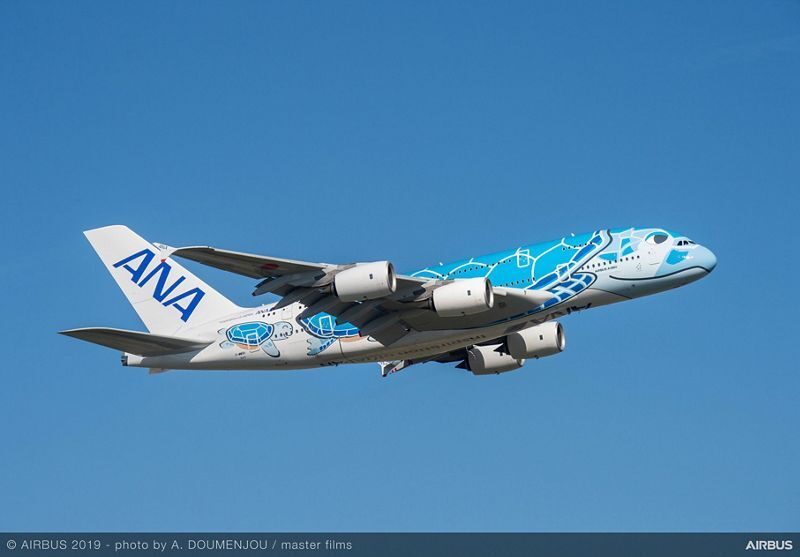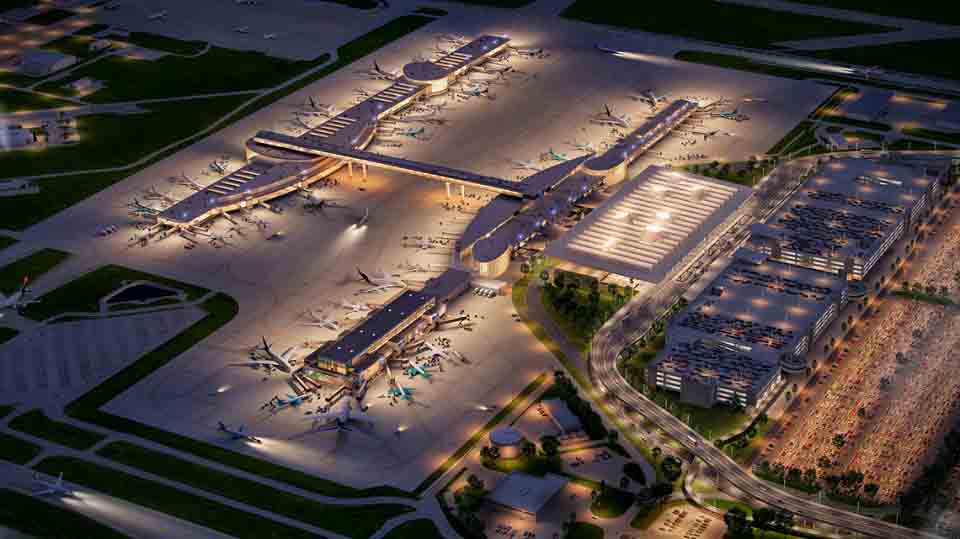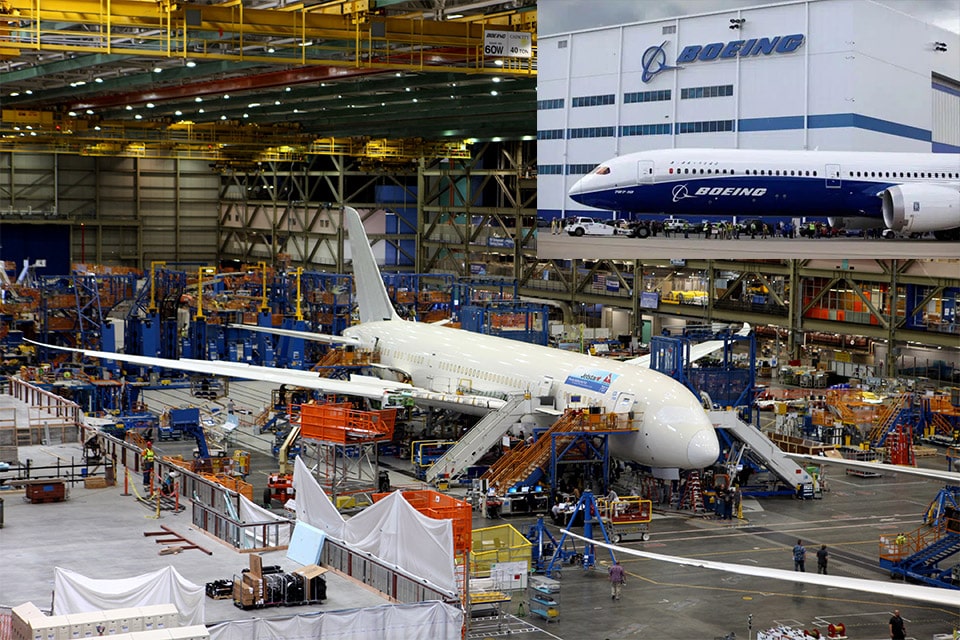Aviation
ANA Pilots Can Now Fly Both Airbus A380 & A320

Tokyo, 14 October 2021 – All Nippon Airways (ANA) is set to introduce Mixed Fleet Flying (MFF) for the A380 and A320 Family following approval by Japan’s Civil Aviation Bureau (JCAB). The Japanese carrier is the first operator in the world to introduce the MFF between the two types.
MFF is unique to Airbus aircraft. As a result of flight deck and aircraft control systems it enables pilots to be certified to operate more than one type from the Airbus fly-by-wire product line on a regular and concurrent basis. At ANA this will enable crews to fly a mixed pattern of short and long haul services.
Emirates plans to fly half of its A380 fleet by the winter
Airbus commonality extends from the flight deck into the passenger cabin as well, with a maximum use of similar systems, control panels and procedures within the various aircraft families. The unique level of technical commonality between Airbus fly-by-wire aircraft also streamlines maintenance procedures, resulting in significantly reduced costs.
ANA Unveils the Features of Airbus A380
“We are pleased that A320 and A380 MFF operations were approved by JCAB and that ANA has become the world’s first airline to introduce it ,” said Stéphane Ginoux, Head of North Asia region for Airbus and President of Airbus Japan. “MFF offers airlines increased flexibility and cost-efficiency and has become one of the keys to Airbus’ success. For airlines, the increase in revenue hours flown by pilots due to less standby and downtime results in a significant improvement in productivity.”
Top 10 Best Regional Airports in Asia 2021.
MFF also enables airlines to interchange differently sized aircraft at short notice without crew-scheduling difficulties, allowing them to better match aircraft capacity to passenger demand.
@FlyANA_Official #A380 #A320neo

Airlines
Why Don’t Airplanes Fly Over the Pacific Ocean?

Flights do indeed fly over the Pacific Ocean, but the routes they take are often determined by factors such as airline policies, air traffic control decisions, and weather conditions. The Pacific Ocean is one of the largest bodies of water on Earth, and it’s regularly crossed by numerous flights traveling between North America, Asia, Australia, and other destinations.
However, some specific routes might avoid flying directly over certain parts of the Pacific Ocean for various reasons. For example:
- Safety and emergency considerations: While modern aircraft are equipped with advanced safety features, airlines, and pilots may prefer routes that keep them closer to potential diversion airports or within range of search and rescue facilities in case of emergencies.
- Air traffic control restrictions: Airspace management authorities may impose certain restrictions or preferred routes for managing air traffic efficiently. These restrictions could be based on factors such as military operations, airspace congestion, or diplomatic considerations.
- Weather conditions: Pilots and airlines consider weather patterns when planning routes. While the Pacific Ocean generally experiences fewer weather-related disruptions compared to other regions, factors like turbulence, thunderstorms, or tropical cyclones can influence route selection.
- Managing Cost Factors: In route planning, airlines have to take fuel prices, maintenance costs, crew charges, and other operating costs into account. Direct routes over the Pacific Ocean may be more cost-effective for shorter distances, but they may also necessitate extra safety precautions, including carrying more fuel for longer overwater operations.
- Remote Locations and Navigational Challenges: The Pacific Ocean’s vastness poses navigational issues, particularly for aircraft operating over isolated regions with few ground-based navigational aids. For precise positioning and route direction, pilots must mostly rely on satellite-based technology and onboard navigation systems, which may necessitate additional training and equipment purchases.
- Lack of Suitable Landing Options in the Pacific Ocean: Unlike regions with dense air traffic and numerous airports, the Pacific Ocean has vast stretches of open water with few suitable landing options in case of emergencies. While long-range aircraft are equipped with safety features like life rafts and emergency locator transmitters, the lack of nearby airports can increase the time it takes for rescue and recovery operations to reach distressed aircraft, posing additional risks to passengers and crew. Therefore, flight routes may be planned to ensure proximity to potential diversion airports or alternate landing sites in case of unforeseen circumstances.
Aviation
FAA rolling out new technology at four US airports

The Federal Aviation Administration (FAA) is set to debut cutting-edge airfield surveillance systems at four prominent airports across the United States.
Austin-Bergstrom, Indianapolis, Nashville, and Dallas Love Field will spearhead the implementation of the Surface Awareness Initiative (SAI) by July 2024, marking a significant stride in runway safety enhancement efforts.
SAI revolutionizes air traffic controllers’ situational awareness by leveraging Automatic Dependent Surveillance – Broadcast (ADS-B) data. Through this innovative technology, controllers gain real-time and precise depictions of aircraft and vehicles navigating the entire airfield, irrespective of weather conditions.
Icons representing aircraft and ADS-B-equipped vehicles will populate an airport map, offering comprehensive coverage of runways, taxiways, hold ramps, and other critical areas.
This initiative is a pivotal component of the FAA’s accelerated surface safety portfolio, complementing other vital tools like Approach Runway Verification (ARV) and the Runway Incursion Device (RID). The proactive deployment of these technologies underscores the FAA’s unwavering commitment to fortifying runway safety and averting potentially hazardous incidents.
Beyond technological advancements, the FAA is taking multifaceted measures to bolster safety across the national airspace system. Initiatives include aggressive air traffic controller recruitment drives, enhancements to the Air Traffic-Collegiate Training Initiative, and the deployment of upgraded tower simulator systems in numerous facilities nationwide by the end of 2025.
Additionally, the FAA is fostering collaborative efforts through regular runway safety action team meetings and investing substantially in runway lighting and surface improvements at airports of varying sizes.
Aviation
Boeing says 787 Dreamliner aircraft is safe

Boeing is standing firm on the safety and durability of its 787 Dreamliner aircraft despite mounting criticism and whistleblower allegations.
In response to concerns raised by whistleblowers and ahead of a congressional hearing, the aviation giant emphasized its rigorous testing protocols and asserted confidence in the integrity of its planes.
During a media briefing accompanied by a PowerPoint presentation, boeing aircraft
reiterated its confidence in the safety of both the 787 and 777 aircraft models. Senior engineers showcased extensive testing procedures aimed at refuting claims that approximately 1,400 Boeing planes may be afflicted by significant safety issues. The company addressed specific allegations, including concerns about gaps in manufacturing processes that could lead to premature fatigue failure over time.
The upcoming Senate hearing is expected to feature testimony from Boeing engineer Sam Salehpour, who has publicly criticized boeing airplanes safety practices and alleged retaliation for speaking out. Salehpour’s claims, currently under investigation by the FAA, include allegations of workers resorting to extreme measures during assembly, such as “jumping on pieces of the airplane” to align them.
Boeing officials stressed that thorough inspections of nearly 700 in-service Dreamliner jets revealed zero airframe fatigue findings, even after six and twelve years of heavy maintenance inspections. These results have been shared with the FAA, according to Boeing’s chief engineer, Steve Chisholm. He emphasized that the materials used in the construction of the 787 were specifically chosen for their resistance to fatigue and corrosion.
In response to Salehpour’s accusations of shortcuts in assembly processes, boeing planes
acknowledged instances where shims were not of the proper size and where areas did not meet skin-flatness specifications. However, the company dismissed claims of excessive force during assembly, stating that such practices were not part of their standard procedures.



























